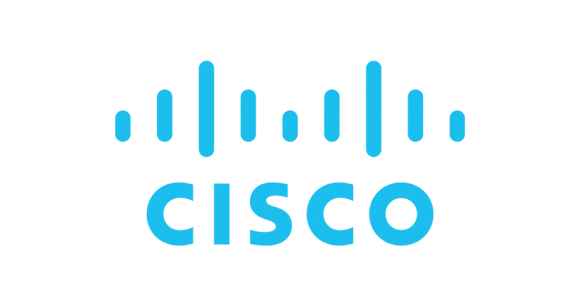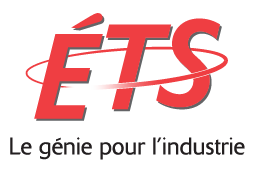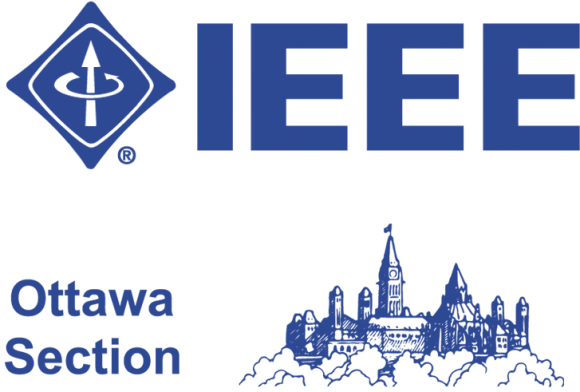Live program
FRIDAY, 18 JUNE 2021
09:00am - 10:00am (EDT)
Panel: "RIS-based wireless communications for 6G: theoretical performance limits, physical realization and practical implementation",
Moderators:
Chau Yuen, Singapore University of Technology and Design, Singapore.
Mark Flanagan, University College Dublin, Dublin, Ireland.
Speakers:
Vincenzo Sciancalepore, NEC Laboratories Europe GmbH, Germany,
Talk: Rethinking wireless network design for 6G
Abstract: Information communication, computation and storage technologies are jointly reshaping the way we leverage on technology. This leads to a wide range of big data and artificial intelligence applications while paving the road to a full customized autonomous user experience. The recent standardized 5G industry is intensively working today on designing, prototyping and testing fundamental technological advances to deliver the promised performance in terms of latency, energy efficiency, wireless broadband capacity, elasticity, etc. Nevertheless, looking at the ever-increasing requests for new services and predicting the development of new technologies within a decade from now, it is already possible to envision the need to move beyond 5G so as to design a new architecture incorporating new key-technologies to satisfy upcoming needs at both individual and societal levels. It is mandatory to fully understand the key enabling technologies that will enable 6G networks to meet its challenging performance targets and how the Cloud will play an additional operational role in future wireless networks. Therefore, there is an impelling need to move to a sixth generation (6G) of mobile communication networks, starting from a gap analysis of 5G, and predicting a new synthesis of near-future services, like holographic communications, high precision manufacturing, a pervasive introduction of artificial intelligence and the incorporation of new technologies, like sub-THz or Visible Light Communications (VLC), in a truly 3-dimensional (3D) coverage framework, incorporating terrestrial and aerial radio access points to bring cloud functionalities where and when needed on demand. All will be encompassed in a full picture by showing the extraordinary opportunities that goal-oriented wireless semantic communications and Reconfigurable Intelligent Surfaces (RISs) will offer to 6G systems as core-technologies to control the Smart Radio Environment while achieving unprecedented KPIs.
Dinesh Bharadia, University of California San Diego, CA, USA
Talk: Breaking the curse of MIMO throughput scalability with Smart Surfaces.
Abstract: In the last decade, MIMO spatial multiplexing has promised to increase data throughput by orders of magnitude. However, we are yet to enjoy such improvement in real-world environments, as achieving the capacity of the MIMO channels requires rich scattering and therefore often precludes effective MIMO spatial multiplexing. Furthermore, the gains are limited by scattering of the environment rather than MIMO antennas. In this talk, I would present ScatterMIMO, which uses smart surface to increase the scattering in the environment, to provide MIMO spatial multiplexing gain. Specifically, the smart surface pairs up with a wireless transmitter device say an active AP, and re-radiates the same amount of power as any active access point (AP), thereby creating virtual passive APs. ScatterMIMO allows the smart surface to provide spatial multiplexing gain, which can be deployed at a very low cost. Furthermore, ScatterMIMO can provide signals to their clients with power comparable to real active APs, and can increase the coverage of an AP. Furthermore, we design algorithms to optimize ScatterMIMO’s smart surface for each client with minimal measurement overhead, supporting the high mobility of the clients.
Fan Yang, Tsinghua University, Beijing, China
Talk: Reconfigurable Intelligent Surface for Future Wireless Communications: Physical Realization and System Demonstration.
Abstract: Reconfigurable intelligent surfaces (RISs) exhibit great potential for future wireless communications. This talk will first present the designs and prototypes of various RISs. Their scattering performance and power consumptions will be discussed in details. Next, representative testing results will be reported where the RISs are incorporated between base stations (BS) and user equipment (UE). It is expected this talk will support the deployment of RIS in future wireless communication systems.
Yifei Yuan, China Mobile Research Institute, Beijing, China
Talk: Opportunities and challenges of RIS for future generation mobile networks
Abstract: Great opportunities of Reconfigurable Intelligent Surface (RIS) lie in its potential of improving the radio propagation environment in such a profound way that traditional technologies would not be capable of. In this sense, RIS does not only function like low power nodes, but also can be considered as part of the infrastructures widely deployed. However, RIS faces many challenges, as more practical factors and constraints are taken into account. Comprehensive channel models of RIS are still scanty. The lackluster of relay technology in practical networks, a sort of predecessor of RIS, makes wireless industry be very cautious about the cost, the complexity, or even the use cases of RIS. Channel estimation and control mechanisms at physical layers need to be efficient and feasible in real operations. RIS devices should be manufactured at affordable costs, be able to withstand harsh weather, and maintain the desirable electric properties over many years, especially if deployed outdoor.
Presentation Sessions (on-demand):
Session 1. Friday June 18, 2021, 12h30 PM
1. Spectral Efficiency Optimization for Hybrid Relay-Reflecting Intelligent Surface, Nhan Thanh Nguyen (University of Oulu, Finland); Quang-Doanh Vu (The Mobile Networks, Nokia, Finland); Kyungchun Lee (Seoul National University of Science and Technology, Korea (South)); Markku Juntti (University of Oulu, Finland)
2. Energy Efficient Intelligent Reflecting Surface Assisted Terahertz Communications, Qirui Wu and Yirun Zhang (King's College London, United Kingdom (Great Britain)); Chongwen Huang (Zhejiang University, China); Chau Yuen (Singapore University of Technology and Design, Singapore); Zhaohui Yang and Mohammad Shikh-Bahaei (King's College London, United Kingdom (Great Britain))
3. Training Signal Design for Sparse Channel Estimation in Millimeter-Wave Communication with Intelligent Reflecting Surfaces, Song Noh (Incheon National University, Korea (South)); Heejung Yu (Korea University, Korea (South)); Youngchul Sung (KAIST, Korea (South))
4. Average Rate Analysis of RIS-aided Short Packet Communication in URLLC Systems, Ramin Hashemi, Samad Ali, Nurul Huda Mahmood and Matti Latva-aho (University of Oulu, Finland)
5. RIS-Assisted Broad Coverage for mmWave Massive MIMO System, Muxin He and Wei Xu (Southeast University, China); Chunming Zhao (National Mobile Communications Research Laboratory, Southeast University, China)
Session 2. Friday June 18, 2021, 12h30 PM
1. Relay-Reconfigurable Intelligent Surface Cooperation for Energy-Efficient Multiuser Systems, Mohanad Obeed (University of British Columbia-Okanagan, Canada); Anas Chaaban (University of British Columbia, Canada)
2. Intelligent Reflecting Surface Aided MISO Uplink Wireless Network: Feasibility and Power Control, Yang Liu (Dalian University of Technology, China); Jun Zhao (Nanyang Technological University, Singapore); Ming Li (Dalian University of Technology, China); Qingqing Wu (University of Macau, China)
3. Joint Admission Control and Beamforming for Intelligent Reflecting Surface Aided Wireless Networks, Ding Li (ShanghaiTech University, China); Kunlun Wang (East China Normal University, China); Hongbin Zhu, Yong Zhou and Yuanming Shi (ShanghaiTech University, China)
4. Channel Modeling and Analysis of Reconfigurable Intelligent Surfaces Assisted Vehicular Networks, Long Kong (Interdisciplinary Centre for Security, Reliability and Trust (SnT) & University of Luxembourg, Luxembourg); Jiguang He (University of Oulu, Finland); Yun Ai (Norwegian University of Science and Technology, Norway); Symeon Chatzinotas (University of Luxembourg, Luxembourg); Björn Ottersten (University of Luxembourg, Luxembourg)
5. Reconfigurable Intelligent Surface Configuration and Deployment in Three-dimensional Scenarios, Bilian Xu (Shanghai Advanced Research Institute & Chinese Academy of Sciences, China); Ting Zhou, Tianheng Xu and Yuzhen Wang (Shanghai Advanced Research Institute, Chinese Academy of Sciences, China)
Session 3. Friday June 18, 2021, 12h30 PM
1. Two-user SINR Region for Reconfigurable Intelligent Surface Aided Downlink Channel, Xian Liu (Beijing University of Posts and Telecommunications, China); Cong Sun (School of Sciences, Beijing University of Posts and Telecommunications, China); Eduard Jorswieck (Technische Universität Braunschweig, Germany)
2. IRS-Assisted Massive MIMO-NOMA Networks with Polarization Diversity, Arthur Sousa de Sena (Lappeenranta University of Technology, Finland); Pedro Henrique Juliano Nardelli (Lappeenranta University of Technology & University of Oulu, Finland); Daniel Benevides da Costa (National Yunlin University of Science and Technology (YunTech), Taiwan); Francisco Rafael Marques Lima (Wireless Telecom Research Group (GTEL), Brazil); Liang Yang (Hunan University, China); Petar Popovski (Aalborg University, Denmark); Zhiguo Ding (University of Manchester, United Kingdom (Great Britain)); Constantinos B. Papadias (The American College of Greece, Greece)
3. Multi-IRS-assisted Multi-Cell Uplink MIMO Communications under Imperfect CSI: A Deep Reinforcement Learning Approach, Junghoon Kim and Seyyedali Hosseinalipour (Purdue University, USA); Taejoon Kim (University of Kansas, USA); David Love (Purdue University, USA); Christopher G. Brinton (Purdue University & Zoomi Inc., USA)
4. Near-Field Beamforming at Intelligent Re-Configurable Surface in Uplink Transmission, Visa Tapio and Markku Juntti (University of Oulu, Finland); Ibrahim Hemadeh and Alain Abdel-Majid Mourad (InterDigital, United Kingdom (Great Britain))
5. Resource Allocation for IRS-Assisted Sensing-Enhanced Wideband CR Networks, Yuhang Wu, Fuhui Zhou, Qihui Wu and Yang Huang (Nanjing University of Aeronautics and Astronautics, China); Rose Qingyang Hu (Utah State University, USA)
Session 4. Friday June 18, 2021, 12h30 PM
1. Reconfigurable Intelligent Surface for Interference Alignment in MIMO Device-to-Device Networks, Min Fu (ShanghaiTech University & Shanghai Institute of Microsystem and Information Technology, Chinese Academy of Sciences & University of Chinese Academy of Sciences, China); Yong Zhou and Yuanming Shi (ShanghaiTech University, China)
2. Hybrid Beamforming and Passive Reflection Design for RIS-Assisted mmWave MIMO Systems, Qi Zhu, Hongyu Li, Rang Liu, Ming Li and Qian Liu (Dalian University of Technology, China)
3. Secrecy Performance Analysis for Reconfigurable Intelligent Surface aided NOMA Network, Zhiqing Tang (Zhengzhou University, China); Tianwei Hou (Beijing Jiaotong University, China); Yuanwei Liu (Queen Mary University of London, United Kingdom (Great Britain)); Jiankang Zhang (University of Southampton, United Kingdom (Great Britain))
4. Spectral Efficiency vs Complexity in Downlink Algorithms for Reconfigurable Intelligent Surfaces, Pooja Nuti (The University of Texas Austin, USA); Brian L Evans (The University of Texas at Austin, USA)
5. Energy-efficient Joint Beamforming Design for IRS-assisted MISO System, Gen Li (Southwest Jiaotong University, China & Memorial University, Canada); Ming Zeng (Université Laval, Canada); Deepak Mishra (University of New South Wales (UNSW) Sydney, Australia); Li Hao and Zheng Ma (Southwest Jiaotong University, China); Octavia A. Dobre (Memorial University, Canada)
Session 5. Friday June 18, 2021, 12h30 PM
1. Optimization of Reconfigurable Intelligent Surfaces Through Trace Maximization, Akbar Sayeed (University of Wisconsin-Madison, USA)
2. Reconfigurable Intelligent Surface-Assisted Ambient Backscatter Communications - Experimental Assessment, Romain Fara (Orange Labs, France); Dinh-Thuy Phan-Huy (Orange-France Telecom, France); Philippe Ratajczak (Orange Labs, France); Abdelwaheb Ourir (Institut Langevin ESPCI Paris CNRS, France); Marco Di Renzo (Paris-Saclay University / CNRS, France); Julien de Rosny (CNRS, ESPCI Paris, PSL Research University, France)
3. Deep Learning for THz Drones with Flying Intelligent Surfaces: Beam and Handoff Prediction, Nof Abu Zainab (Intelligent Automation Inc., USA); Muhammad Alrabeiah and Ahmed Alkhateeb (Arizona State University, USA); Yalin E Sagduyu (Intelligent Automation, Inc., USA)
4. Secure Intelligent Reflecting Surface Assisted UAV Communication Networks, Junhao Fang (KING'S COLLEGE LONDON, United Kingdom (Great Britain)); Zhaohui Yang (King's College London, United Kingdom (Great Britain)); Nasreen Anjum (SBBWUP, Pakistan); Ye Hu (Virginia tech, USA); Hamid Asgari (Thales UK Research & Technology, United Kingdom (Great Britain)); Mohammad Shikh-Bahaei (King's College London, United Kingdom (Great Britain))

















